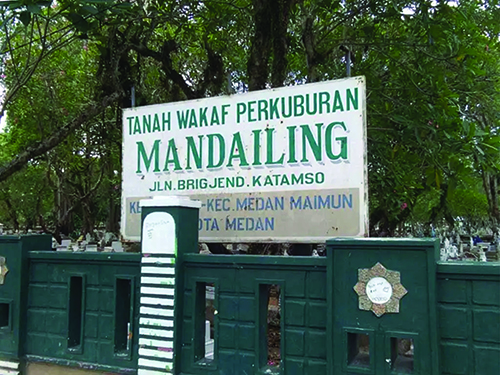A graveyard holds a mirror up to a city
The burial site reflects the social ties and tensions of urban dwellers.

The Mandailing graveyard in the Indonesian city of Medan. Credit: Faizah Zakaria.
For many, graveyards are the final resting place when we have reached the end of our lives. But far from being detached from the land of the living, graveyards also reflect the social ties and tensions of urban dwellers.
One of the few Asian graveyard studies in the Indonesian city of Medan shows how a burial site became a hotspot for conflict and activism among residents.
Asst Prof Faizah Zakaria from NTU’s School of Humanities traced the history of the graveyard to a group of people from the North Sumatran uplands called the Mandailing.
The Mandailing sought to identify themselves separately from other uplanders. This resulted in them going through a legal battle to establish a graveyard for themselves in 1926.
Their decision to do this stemmed from their unhappiness when one of their dead was not allowed to be buried in a graveyard. Earlier tensions date back to when the then ruling Dutch segregated the Mandailing from other communities.
The graveyard later reflected other changes in the city. The burial site was often badly hit by flood waters, which attracted poor residents to tend affected graves for a fee. This encouraged residents to work with political and economic parties to run activities at the graveyard to uplift the needy.
---
Details of the study, “Birth, life, and afterlife of an Indonesian graveyard: Environmental rule and its discontents”, can be found in Journal of Social History (2021). DOI: 10.1093/jsh/shab031.
The article appeared first in NTU's research & innovation magazine Pushing Frontiers (issue #21, December 2022).


.tmb-listing.jpg?Culture=en&sfvrsn=6c7b6f1f_1)
.tmb-listing.jpg?Culture=en&sfvrsn=ab6472c8_1)

.tmb-listing.jpg?Culture=en&sfvrsn=ffaf2aec_1)
5872e661-3cf5-41b6-abee-8d297a83209c.tmb-listing.jpg?Culture=en&sfvrsn=61d1c8d7_1)
